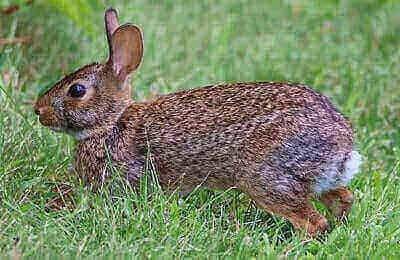Disclosure: We may earn commissions if you purchase products after clicking on a link from our site.
Do you want to continue hunting during the winter? Would you like to learn how to hunt cottontail rabbits? Cottontail rabbits are fast, elusive, and difficult to find. With so many predators, they learn to protect themselves from the air as well as the ground. In this article, we discuss how to hunt cottontail rabbits to help you take more rabbits home during the winter.
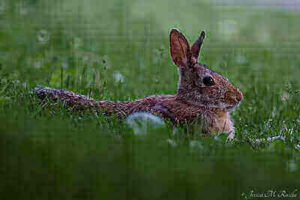
How To Hunt Cottontail Rabbits
1. Scouting Cottontails
Cottontail rabbits live in burrows. When the weather is cold, they remain in their burrows. When it is warm, they will come out. When you scout an area for signs of cottontails, look for overgrown homesteads, rock piles, brush piles, fence rows, hollow logs, thorn tangles, briars, unused barns, fallen trees, and anything that can provide aerial protection from predators.
Additionally, look for tracks, trails, and droppings. The droppings are small, round, and about the size of blueberries. If you spot tracks, a maze-like network of trails, tunnels, and droppings close by brush piles and heavy cover, you just might be close to cottontail territory. Cottontails are most active early in the morning and late in the evening. Therefore, when learning how to hunt cottontail rabbits, the best time for scouting cottontails is during those hours.
2. Snow
When it snows, that is a good time to get out and look for signs of cottontail rabbits. Look for tracks and droppings. Study the tracks to see where they are leading. If they disappear in thick cover, then cottontails are most likely under the thick cover.
Additionally, it is easier to spot them after a snowfall thanks to the snow-white background. The days after a snowfall are the best days to go looking for cottontails as they will come out to benefit from the warmth of the sunny sides of trees and rocks. When learning how to hunt cottontail rabbits, check the backroads after a snowstorm to look for tracks of animals like cottontail rabbits.
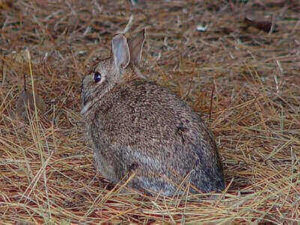
3. Eating Signs
Cottontails eat herbaceous plants and the bark of many trees in the winter. Cottontail rabbits will chew twigs and stem at sharp angles. If you look closely at the plants, they will have teeth marks. Cottontail rabbits eat the bark of trees until they are without any bark for a couple of feet.
They also eat clover, alfalfa, and berries. Locate bushes with these and you might find cottontails nearby. When learning how to hunt cottontail rabbits, be attentive to the plants and check for signs of chewing.
4. Rabbits Behavior
Don’t give up when a rabbit darts off at top speed zig-zagging as it goes. Watch it and be ready to shoot a quick burst. They tend to run and put some distance between you and them and then stop near cover to assess if the danger is still present.
When they stop to assess the danger, that is the opportunity you have been waiting for. Take quick shots to take it down. You will learn this as you spend more time figuring out how to hunt cottontail rabbits.
5. Black Eyes & Pinkish Ears
When you are learning how to hunt cottontail rabbits, be on the lookout for pinkish-colored ears and black eyes. If you start looking for eyes and ears, you will notice how many cottontails you pick out beneath trees and rock ledges. Also, look out for dark, compact, and ball-shaped objects. When searching for these signs, be ready to take a shot once you spot them.
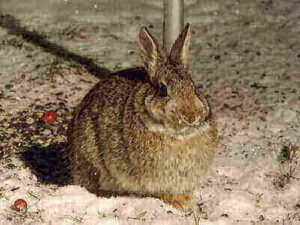
6. Jumping Cottontails
In areas with thick tall grass, cattails, downed trees, and thick vegetation, you can walk slowly in these areas and then stop for about a minute. This activity unnerves cottontails. Repeat this a number of times and rabbits will eventually flush by themselves. If you have a hunting partner, one can “kick up” the rabbits while the other is waiting with a rifle ready to take a shot.
7. Hunting With Dogs
Hunting cottontails with dogs can be an exhilarating and effective method for pursuing these elusive prey. Specially trained rabbit dogs, such as beagles, are adept at scenting and flushing out cottontails from dense cover. These dogs use their keen sense of smell to track rabbits, often working in a pack to cover a larger area efficiently.
Once a rabbit is located, the dogs will eagerly pursue it, driving it out into the open where hunters can take their shot. Working closely with skilled hunting dogs adds an element of excitement to the hunt while increasing the chances of success.
Moreover, hunting with dogs allows for a more dynamic and engaging experience in the field, as hunters must stay attuned to the movements and signals of their canine companions. However, hunters need to train and handle their dogs responsibly to ensure the safety and welfare of both the dogs and the rabbits being pursued.
Beagle is the dog breed that is often used to hunt cottontails. The dogs will be on the trail of the cottontail rabbits once they pick up their scent. Some well-trained dogs will go after the rabbits even in very thick covers and not just remain on the edges of the cover. This will get the rabbits out of their cover and help you take them down once they are exposed.
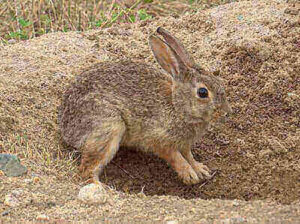
8. Jump & Circle Maneuver
Rabbits don’t go very far from their home area when they are flushed by dogs or hunters. They will dart off and put some distance between them and the pursuers. It will then stop and wait. if the dogs or humans get close to it once again, it will move again to put distance between it and the dogs. This entire escape run will circle them back to their home area. The circle is usually within 100 yards.
However, you will experience situations in which the rabbits will go far off before circling back to their comfort area. This change in their behavior is the result of hunting pressure from many hunters.
9. Small Game Weapon
When hunting cottontail rabbits, hunters typically opt for small-caliber firearms or air rifles suited for taking down these small, swift creatures. Popular choices include .22 caliber rifles or pistols, as well as shotgun models with smaller gauges such as 20 or 28 gauge.
These firearms offer sufficient power and accuracy for the relatively short-range shots often encountered in cottontail rabbit hunting while minimizing the risk of excessive damage to the rabbit’s meat.
Additionally, some hunters may choose to use archery equipment such as compound bows or crossbows, which can provide a challenging and rewarding alternative to firearms. Ultimately, the choice of weapon depends on the hunter’s preference, skill level, and local hunting regulations.
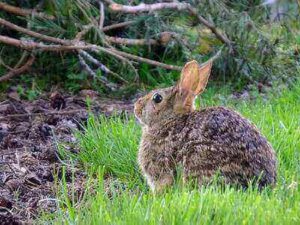
10. Wind Direction
When hunting cottontail rabbits, paying attention to wind direction is crucial for several reasons. Rabbits have an acute sense of smell, and they rely on detecting scents carried by the wind to detect predators.
Therefore, hunters should position themselves downwind of areas where rabbits are likely to be found, allowing their scent to be carried away from the rabbits’ location. Additionally, hunting with the wind at your back can help mask your scent, making it less likely for rabbits to detect your presence. By strategically positioning themselves relative to the wind direction, hunters can increase their chances of getting within range of cottontail rabbits without alerting them to their presence.
11. Hunter’s Orange
Wearing hunter’s orange is essential for safety when hunting cottontail rabbits, particularly in areas where other hunters may be present. The vibrant color stands out against the natural surroundings, making hunters more visible to others in the vicinity.
This visibility helps prevent accidental shootings and ensures that hunters can easily identify each other in dense vegetation or low-light conditions. Additionally, wearing hunter’s orange can also alert non-hunters, such as hikers or property owners, to the presence of hunters in the area, reducing the risk of misunderstandings or conflicts.
Ultimately, incorporating a hunter’s orange into one’s hunting attire is a simple yet crucial precautionary measure that enhances safety for all individuals involved in the hunting environment.
12. Talk To Farmers
Talking to farmers near the areas where you hunt for cottontails can be incredibly beneficial for several reasons. Farmers often have intimate knowledge of the land, including the locations where cottontail rabbits are commonly found. By engaging with farmers, hunters can gain valuable insights into the behavior and movements of rabbits, as well as the best times and areas for hunting.
Additionally, farmers may be able to permit hunters to access private lands, expanding their hunting opportunities beyond public areas. Establishing a positive relationship with farmers also fosters goodwill within the community and may lead to future hunting opportunities or partnerships.
Overall, communicating with farmers can significantly enhance a hunter’s chances of success while also promoting responsible and respectful hunting practices. If you want to hunt snowshoe hares, you can read how to hunt snowshoe hares.
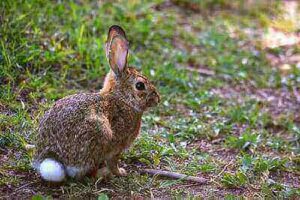
The Bottom Line
How to hunt cottontail rabbits is not as difficult as it seems. Hunting cottontail rabbits is challenging and exciting. Cottontails are difficult to locate as they seek protection in thick cover from the ground and aerial predators. By good scouting, understanding rabbit behavior, and hunting strategies you can be successful in hunting cottontail rabbits.
In this article, we discussed how to hunt cottontail rabbits. If you want to get the best rabbit hunting tips, then click this link. You can also read how to hunt snowshoe hares, how to hunt jackrabbits, and how to hunt javelinas.
